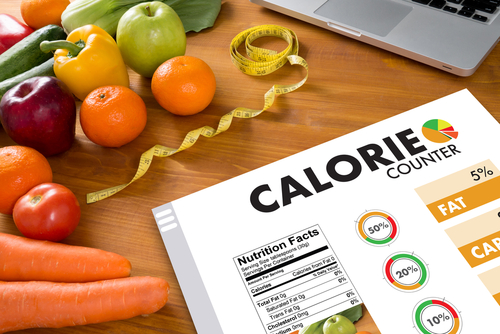Is Tracking Macros Essential for Weight Loss Success?
Counting macros has become a diet trend in recent years but is it important to follow this trend to reach your weight loss goals? Let’s find out what is behind this trend and if it is worth implementing into your weight loss plan.
What are Macros?
Macro is simply an abbreviation of macronutrients, which are nutrients the body needs in large amounts. These include carbohydrates, proteins, and fats.
The body cannot make most of the substances it needs to function properly, repair itself, produce energy, and grow on its own. Our nutrition is essential, and the right balance of these macronutrients work is imperative for the body to get what it needs. Each macro has a vital role in the body.
Carbohydrates: The body’s main source of energy (especially the brain). Provides fiber and many vitamins, minerals, and antioxidants. Important fuel for supporting physical activity.
Proteins: Important for building, repairing, and maintaining body tissues by supplying amino acids. Also supplies energy to the body.
Fats: Support main metabolic functions, such as nutrient transport. Is part of many body cells and hormones. Helps protect organs and keep the body warm. Assists with vitamin absorption and is another source of energy for the body.
What are the Guidelines for Macros?
Many nutrition recommendations provide recommended amounts of macronutrients to promote overall health, reduce the risk of disease, and to maintain a healthy weight. Most often guidelines refer to the Dietary Guidelines for Americans as they are rooted in science-based evidence and are updated every 5 years.
The ranges recommended by the Dietary Guidelines for Americans reflect the amounts needed to provide essential nutrients but also the amounts linked to reduce the risk for chronic disease. If someone aims to have their balance of macros outside of these recommended ranges, it may increase the risk for some chronic diseases and possibly lead to inadequate intake of essential nutrients. They recommend aiming for the diet to have this breakdown of macros:
Carbohydrates: 45-65% of calories
Protein: 10-35% of calories
Fat: 20-35% of calories
How to Count Macros?
Counting macros can be a time consuming and complicated task, as you would need to calculate your daily calorie goals. Then determine the total macro grams that fit into each of these percentages and add up the grams of each macro you consume daily.
Many people rely on apps to simplify counting macros and many apps people already use to track their food intake will calculate their daily macro percentages.
They would set these numbers as their daily goals and count the grams of what they ate each day to reach these amounts. For example, if someone wanted to count macros for a 1500 calorie diet and wanted to aim for 45% carbs, 35% fat, and 20% protein, their macro goals would look something like this:
169 g carbs
58 g fat
75 g protein
Is Counting Macros Important for Weight Loss?
Knowing the balance of macronutrients you are getting in your diet can help ensure that you are keeping your body nourished with the right proportion of foods, balancing your hormones and appetite, controlling cravings, and reaching your weight goals. Many people find counting macros to be helpful, which is why it has become so popular.
However, the research is pretty clear that consuming an excess of calories regardless of the macro balance will lead to weight gain or stall weight loss. So, while there may be benefits in tracking macros occasionally, if you are focusing on losing weight, calorie deficit remains the most important focus.
Benefits to macro counting for weight loss include fostering an all-foods-fit approach which can help if you struggle with black and white thinking with food. This is important because deprivation and overly-restricted diets are not linked to long-term weight loss maintenance and could promote disordered eating. Fostering balance and moderation helps to create a diet that is maintainable and enjoyable which helps to develop lasting habits for lasting results and feeling great.
In addition, counting macros encourages a balanced diet rather than restricting individual items or overeating one macro over another which can happen with other fad diets or when only focusing on calories. It can also help people to learn about what they are eating and the nutrition it provides for their body, teaching them to focus on quality and proper portions.
How Does Counting Macros Fit into Seattle Sutton’s Healthy Eating?
At Seattle Sutton’s Healthy Eating, we abide by the strict nutritional guidelines from the American Heart Association, American Diabetes Association, and the Dietary Guidelines for Americans. Each of these organizations have recommendations for macro breakdown to support health and wellness.
Macro Breakdown for Our Plans:
1200 calorie plan: 47% carb, 30% fat, 24% protein
1200 calorie vegetarian menu: 61% carb, 32% fat, 20% protein
2000 calorie plan: 47% carb, 31% fat, 23% protein
2000 Calorie vegetarian menu: 49% carb, 32% fat, 19% protein
(This is the macro breakdown of the full week plan with dairy additions)
Each of our meal plans fall within their macronutrient percentage recommendations making macro counting unnecessary unless you have extremely specific goals you are aiming to reach, such as for athletic training. If you choose to track macros while on our meal plans track the macro and calorie content of each meal using the information on our packaging or track the meals with the MyFitnessPal or FatSecret app.
Sometimes calorie counting can go wrong when people only focus on calories and don’t account for their choices, they can end up with an unbalanced diet with poor food choices. Since we combine calorie counting and proper macro distribution, we help you to eat the right foods for your body in the right portion and take the need for counting anything away so you can just enjoy your food and just focus on enjoying your food.








 Weight Loss
Weight Loss Health & Wellness
Health & Wellness Diabetes
Diabetes Heart Health
Heart Health Motherhood & Family
Motherhood & Family Dietary Restriction
Dietary Restriction Other Health Conditions
Other Health Conditions About SSHE
About SSHE


